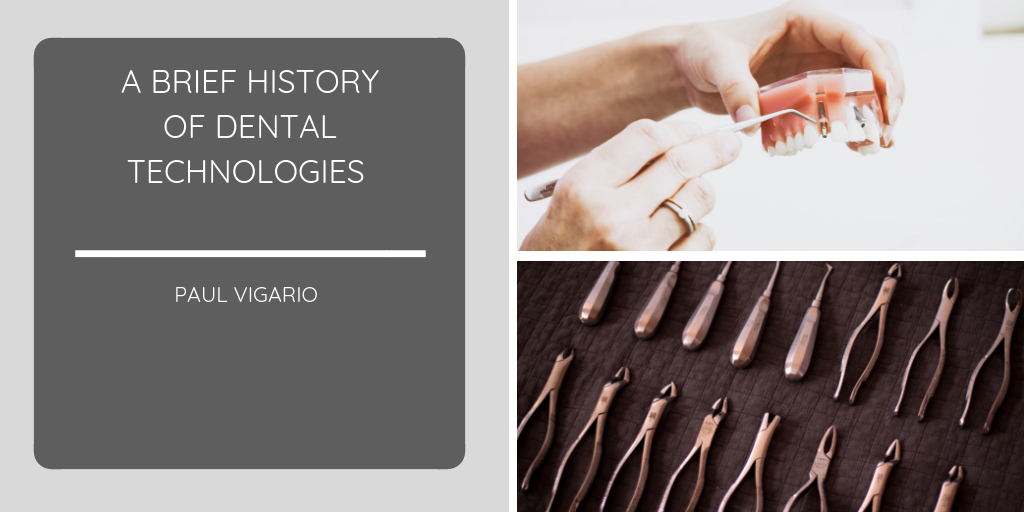Your routine visit to your dentist’s office is around the corner, and you’re starting to think about how the visit will go. The tools that will be used; will you have to get an x-ray or even a small procedure? You may not realize it, but a visit to the dentist is packed with many different technologies that have not only evolved over the years, but are still changing, and will likely continue to change as time goes on. Think back to your list visit: What were some of tools you remember your hygienist or dentist using? Handheld manual tools, ultrasonic cleaning tools, molds & X-rays? While it’s likely you’ve experienced these things during one visit or another, it’s interesting to think about where these high tech tools started.
Toothbrushes
Something as simple as your toothbrush has gone through so many changes since it’s origination dating back to ancient China. Fast forward to a more relevant time, the first nylon bristle toothbrush wasn’t manufactured until 1938. By 1960, electric toothbrushes were newly introduced into the market; and from there, they have seen significant changes that revolutionized the way they clean, from rotation (full or partial), to vibrating, and even a combination of both. Today, you’ll see toothbrushes that almost act as “smart” brushes, with Bluetooth capabilities and ways to monitor brushing habits.
Dental Handpiece
Dental handpieces have been around since the early 18th century. During those times, they were primarily used for manual drilling and extraction procedures; however, they were often hard to operate and made certain procedures rather tedious. By the late 1800s, the first electric drill was put on the market to change the way drilling and extraction procedures were done. By the 20th century, the industry started to see high-speed electric instruments that are now used for extractions, cleanings, and other dental procedures.
Radiology
Radiology is one of the most revolutionized technologies in the dental industry. Since the discovering of X-rays in the late 1800’s, dental professionals have used X-ray technology to capture patient images and help diagnose issues that may be difficult to see with the human eye. However, due to heavy amounts of radiation, the process in which X-rays are completed has changed substantially over the years. Today, 3-D dental imaging is extremely popular in the industry, and very similar to medical systems such as CT scans. This technology uses up to 80% less radiation and quickly scans the subject for a full view in up to 90 seconds.
Cameras & Imaging
You may be familiar with your dental professional capturing an image of your teeth and mouth using a digital camera or intraoral camera; providing a high-quality image that can be quickly uploaded to their computer system. However, the cameras used in dentistry have come a very long way. Intraoral images posed a challenge for many dental professionals due to a lack of light and small spaces. By the early 1950’s, ring flash technology gave dentists the ability to direct light into a patients mouth, providing a clear view into the patient’s mouth. Additionally, the development of film also posed a challenge, as dentists could not view film until it was developed. Today, digital imaging give dental professionals the ability to not only take high-quality intraoral images but also instant speed and seamless computer integration, eliminating the wait for film development. And there is more to come with the dental mirror soon being smart! Smart Mirror technology is just around the corner and SurfCT.com will be at the forefront of these new dental technologies that really enhance and improve our visit to the dentist.
SurfCT.com is a dental information technology company, founded by Paul Vigario. With many different services and solutions offered to clients, SurfCT.com specializes in areas such as dental technologies, digital workflow, marketing, cloud solutions, and HIPAA compliance. SurfCT.com’s technology solutions are revolutionizing general, cosmetic, and pediatric dentistry, along with oral surgery, endodontics, orthodontics, and other specialized dental practices.
